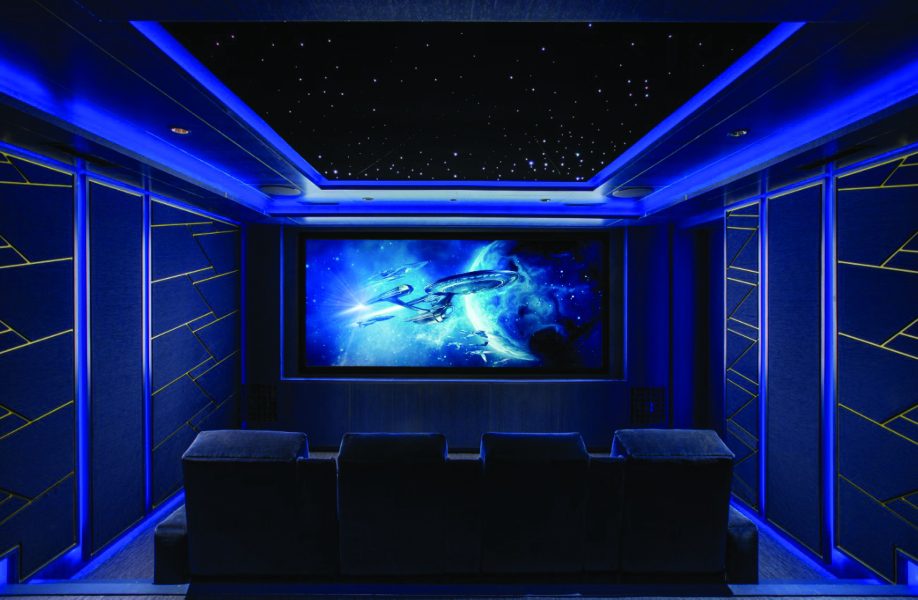Designer: Lisa Slayman ASID, IIDA | Slayman Cinema & Slayman Design Associates

Location: Laguna Beach, Calif.
Website: slaymancinema.com; slaymandesign.com
Years designing theaters: More than 25 years
Number of theaters designed: 40+
Services provided: Home theater/private cinema interior design, complete set of construction documents which include sight line study, floor plans, furniture layout, reflected ceiling plans/lighting plan, interior elevations, sections and details, AV and acoustical integration from consultants, interior finish schedule and finish specifications, furniture/fabric selections.
What makes your service and your designs unique: I am an accredited interior designer — a member of ASID and IIDA — that has an exceptional understanding of the importance of collaboration with AV Integrators and acousticians to create aesthetically elegant and high performing entertainment environments. This collaboration brings certain constraints and desires which the design must evolve around.
I integrate the AV, acoustics, mechanical, and electrical to provide a full set of construction documents to provide a roadmap for the contractor. These rooms are very complicated and are not just about selecting furniture and fabrics.
Do you have a signature design: A private cinema is an environment carefully engineered to create the best audio and video performance possible. The design of these rooms, whatever style the client prefers, needs to make an impression when you walk in, instantly exciting the audience and priming them to have an emotional reaction that carries them into another world.
To me, one of the important elements I typically emphasize are the ceilings in these spaces. They are the perfect focal point, visually drawing the eye away from the walls and providing eye candy from all angles of the room when nothing is on the screen. Having a strong ceiling in my mind really sets the tone for the overall design and feel.
Why should integrators work with theater designers vs. attempting it on their own: Theater designers understand how important technology and acoustics are and can tie these elements together for a successful outcome. Both design and AV have certain constraints and desires and an experienced theater designer can integrate great design with AV, mechanical and electrical criteria that will result in a theater the client has dreamed about and wants the world to experience!
In my experience, clients are typically more excited about the room aesthetically than technically.

What are the biggest mistakes you see integrators make when doing their own theater designs: The first thing that comes to my mind is aesthetics, scale, color/material integration and texture are all elements that play an important role in successful design, along with the most important element, which is imagination and the ability to see the whole space designed in your mind before you even start the process.
There are many steps I take in the design development stage when I start a project both on paper and three-dimensionally in my mind. There is a lot of tugging and pulling that I go through in creating these spaces. It’s just not simply putting some fabric on a wall and picking some colors. That’s why collaboration with all the consultants involved is so critical to create the best outcome possible in the space.
What is the key to great dedicated theater design: Communication, understanding the client’s budget; preferred design direction and expectations, collaboration, and having a vision of the design, which all result in being able to produce a completed set of design/construction documents that are inclusive of all the consultant’s collaboration for the contractor. This is a road map for everyone involved in the project.
Thoughts on microLED trend vs. projection: I’m a purist, I love projection and I will always will, but I do see this as a trend and am building it into my future design considerations. In fact, I’ll be debuting a new design in collaboration with a Utah-based integration firm soon that will utilize LED video walls. You’ll hear more about that soon.







